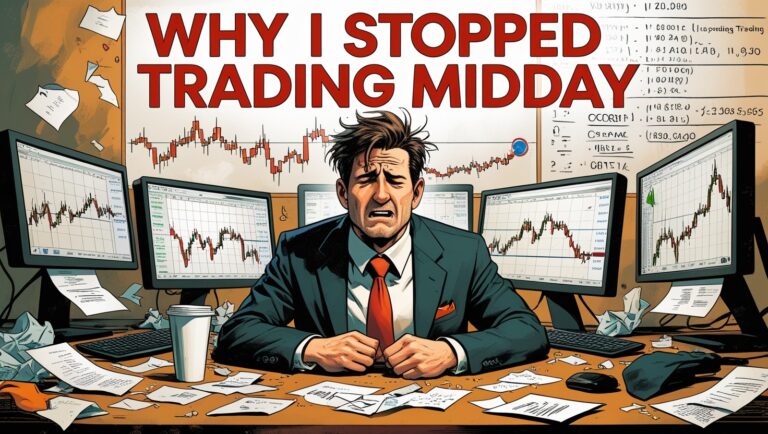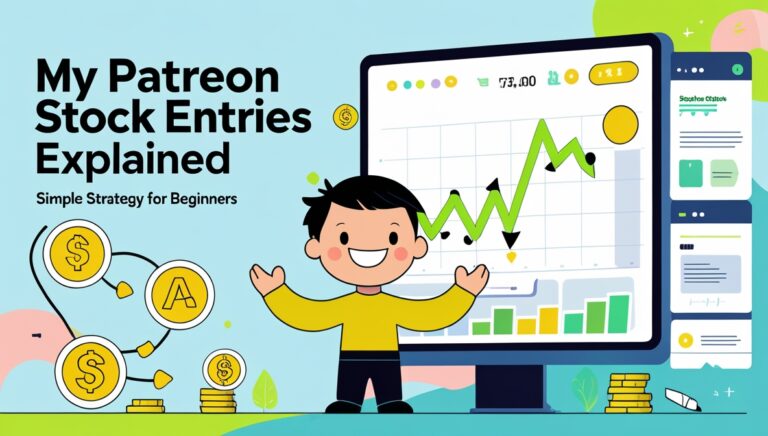How I Spot Hot Stocks Without Relying on Anyone Else’s Alerts
How I Spot Hot Stocks Without Relying on Anyone Else’s Alerts
When I first started trading, I used to chase alerts all the time. Discord groups, Twitter callouts, random chatrooms — I followed what others were saying and hoped for the best. But over time, I realized something powerful: I was never going to be consistent if I relied on someone else to think for me.
Now, I spot hot stocks every day without relying on alerts, and I do it using my own system. That’s the same process I share inside my ebook:
👉 Download it here
It breaks down how I pick stocks before the market even opens — with no indicators, no expensive software, and no one else’s opinion.

Table of Contents
Why I Stopped Chasing Alerts
The biggest problem with alerts is timing. By the time someone posts it, it’s often too late. Either the move already happened, or the stock gets overcrowded and chops. I used to enter late, panic on the dip, and lose money — over and over.
The truth is, if you don’t understand why you’re entering a trade, then you’ll never know when to stay in or get out. That’s what made me take a step back and build my own process.
My Routine to Spot Hot Stocks
Each morning before 9:30AM, I check pre-market gainers, volume spikes, and news catalysts. I build a short watchlist of 5–6 stocks that show momentum. I look at:
- Pre-market volume
- Float size
- Sector momentum
- Key levels from the previous day
Then I wait for confirmation after the open. I don’t need someone to tell me what’s hot — I already did the work.
Tools I Use (They’re Free)
I use Finviz, MarketWatch, and Yahoo Finance to screen for news and gainers. I use TradingView to chart support and resistance. That’s it. I don’t use a $200/month scanner or rely on Twitter alerts anymore.
All of these are free tools, and they help me stay independent, confident, and consistent.
Why You Need Your Own Process
If you can’t find your own trades, you’re not a trader — you’re a follower. Harsh, but true. Once I learned how to read the market for myself, I finally understood why some stocks move and why others fail.
That’s when I started seeing consistency — because I was finally in control.
How My System Helped Me Pay My Bills
Trading isn’t a game for me — it’s part of how I pay my rent, groceries, and other monthly bills. So I don’t gamble. I don’t follow hype. I pick trades that make sense, and I trust my setup.
That’s the exact system I teach in my ebook — how to go from noise to clarity, with a repeatable morning routine and clean setups.
What I Look for in a Hot Stock
Here’s what I personally look for:
- Volume spike with a catalyst
- Float under 100M (ideally lower)
- Clear breakout level
- Momentum in the same sector
Once I see those, I set my alerts or draw my levels. I wait. If it triggers, I act. If not, I don’t chase. That’s how I stay consistent.
You Don’t Need to Be First — Just Be Ready
Most new traders try to catch the exact bottom. I don’t. I wait for confirmation. I let the price tell me what’s going on. This has helped me avoid losses and stay in control of my entries and exits.
Build Confidence, Not Dependence
The moment I stopped asking “What are you trading today?” and started saying “Here’s what I’m watching,” everything changed. I felt confident. I knew my reasons. I wasn’t hoping — I was executing.
That confidence didn’t come from alerts. It came from doing the work.
Final Thoughts
If you’re tired of chasing alerts, burning your account, and feeling lost — it’s time to build your own edge. Learn to spot hot stocks before the market opens, and stop relying on other people’s timing.
If you want my full system and the exact steps I take each day,
👉 Download my ebook
and I’ll show you how I built a simple watchlist that actually makes me money — without anyone else’s help.
One of the first things I had to accept was that nobody cares about my account more than I do. I was giving too much power to other traders — following their alerts, copying their trades, and trusting they knew better. But the truth is, even experienced traders make bad calls. And when they do, it’s my account that takes the hit — not theirs.
So I made a decision. I was going to learn how to spot hot stocks on my own, even if it took longer. I started by studying daily gainers and premarket volume. I paid attention to what made a stock spike — not just the chart, but the news behind it, the float, the sector trend. I treated it like a science.
I noticed that most of the time, hot stocks follow patterns. There’s a rhythm to how momentum builds — a strong premarket push, a pullback at the open, then a breakout or a fakeout. Once I recognized those patterns, I no longer needed someone to tell me what to watch — I already knew what to look for.
I also track which sectors are trending. Some weeks it’s biotech, other weeks it’s AI, EVs, or energy. When I see a sector heat up, I scan for the smaller names in that group — because those are usually the ones that run hard when money flows in.
Instead of blindly trusting other people’s picks, I trust price action. I draw my levels before the bell rings, and I wait for the breakout. That one skill alone — learning to wait — saved me from so many fakeouts. Patience is part of the edge.
I used to think I needed a ton of software or advanced indicators to trade like a pro. But once I stripped all that down and focused on simple setups with volume and structure, I became more profitable. Less noise, more clarity.
These days, my routine is short and effective. I wake up, open Finviz and Benzinga, filter the top gainers by volume and float, then mark up the ones with potential. I focus on just 5–6 names. That’s it. Clean, simple, and intentional.
All this is laid out inside my ebook. I walk you through the exact process I use to build a watchlist, manage risk, and spot momentum early — even before 9:30AM.
Another key? I stay away from overcrowded names. If I see a stock being blasted in five chatrooms and on Twitter, I know it’s too late. The best trades are the quiet ones — the ones you catch before the herd shows up.
Having my own system has also made me emotionally stronger. I’m not panicking when an alert doesn’t play out. I’m not stuck in someone else’s trade plan. I’m in control of every click. And that’s why I can pay my bills trading only 2–3 times a week.
If I had kept depending on others, I’d probably still be guessing. But now, I know what to look for, how to manage my size, and when to walk away. That’s the power of independence in trading.
If you want to learn the exact process I built to go from chasing alerts to spotting my own winning setups,
👉 Download my ebook here.
You don’t need indicators, scanners, or callouts — just a clean plan and the discipline to follow it.

Stay ahead in the stock market! Subscribe to our newsletter and receive exclusive stock flow reports, trading insights, and actionable tips directly in your inbox. Join thousands of traders who get our updates first.








6 Comments